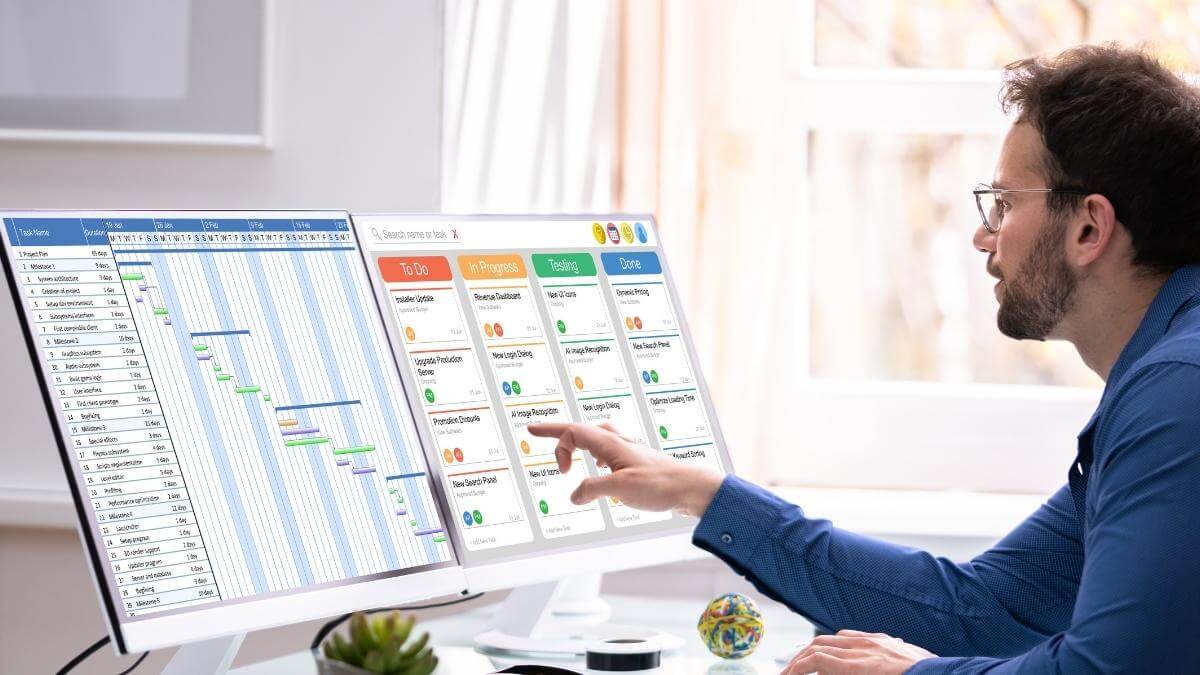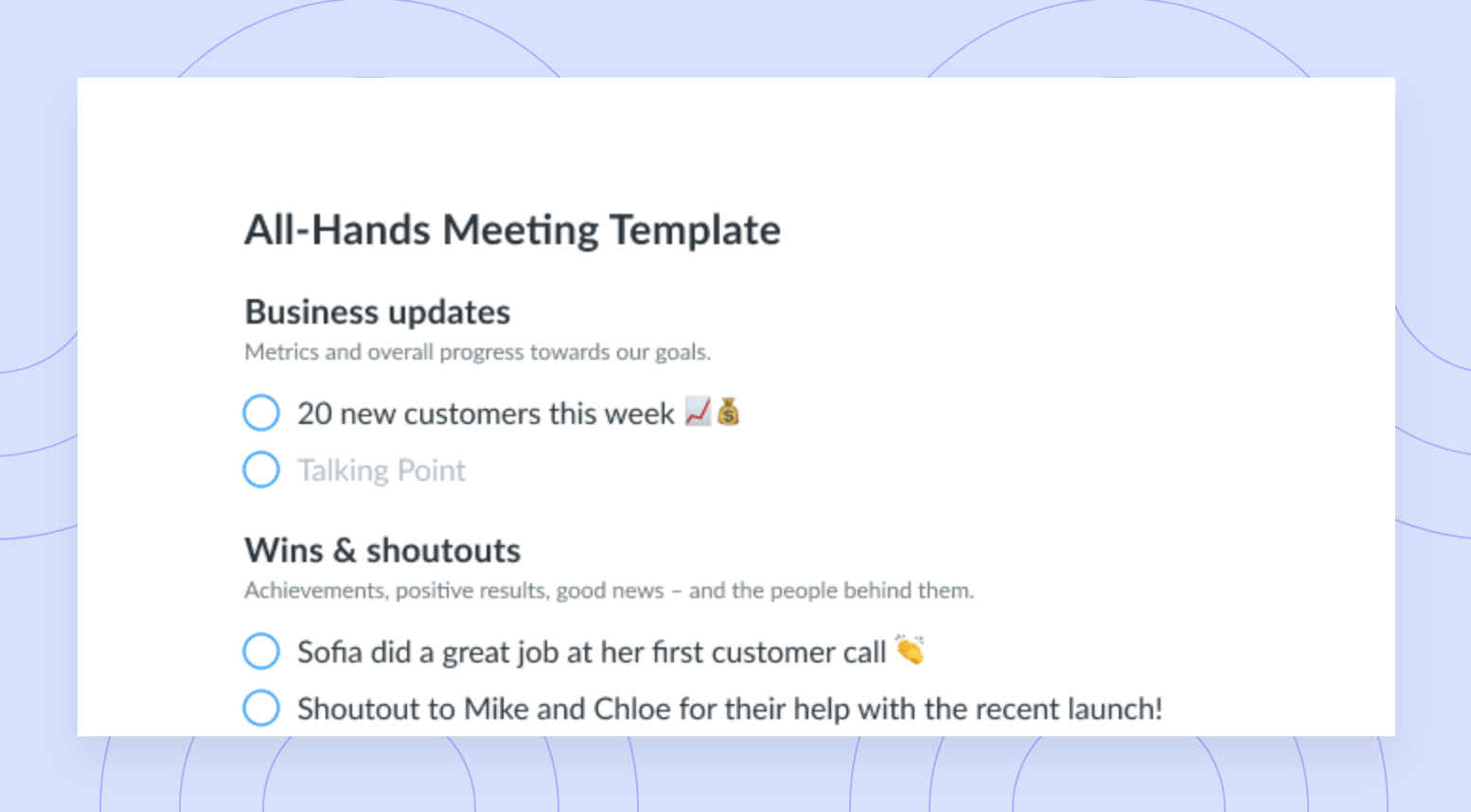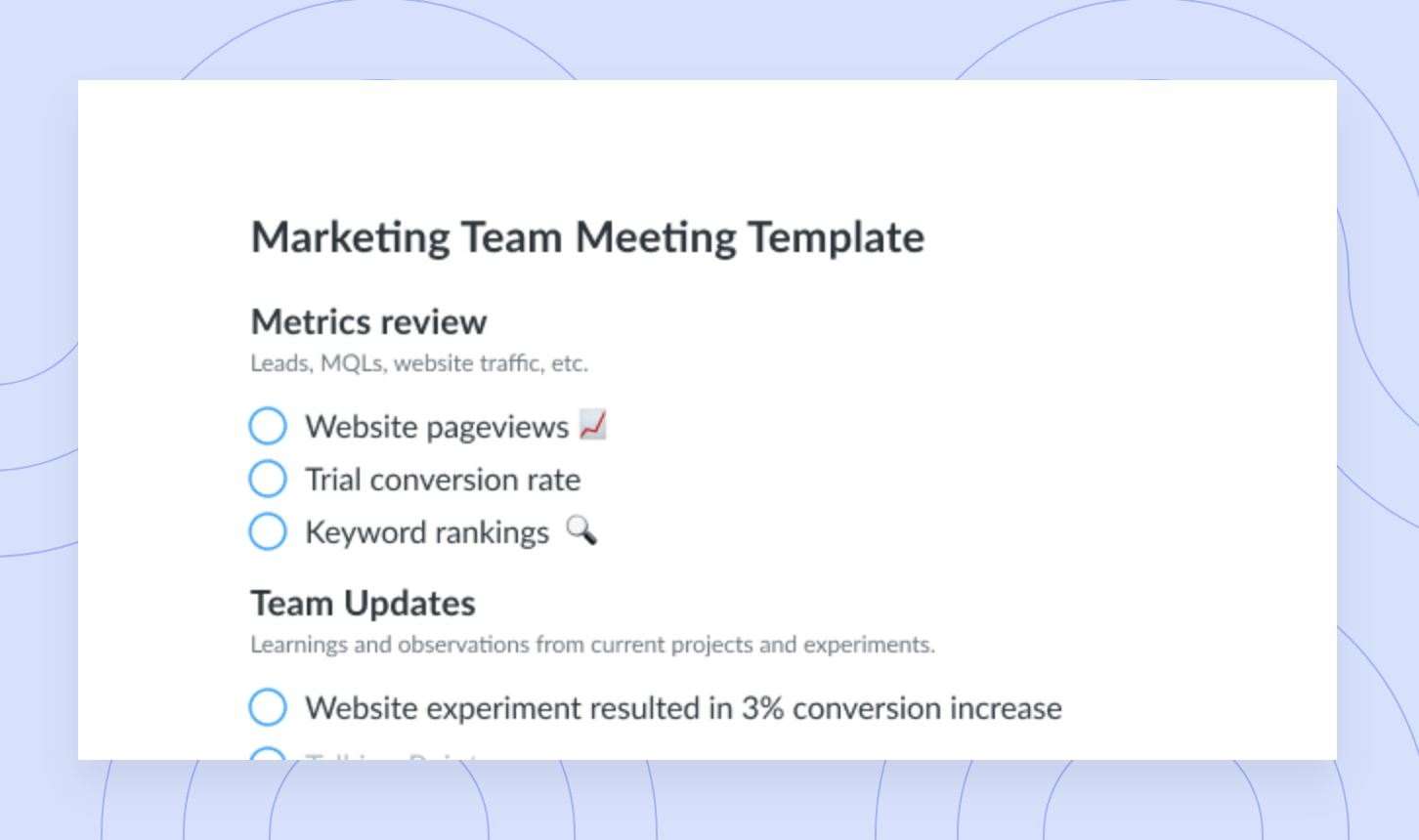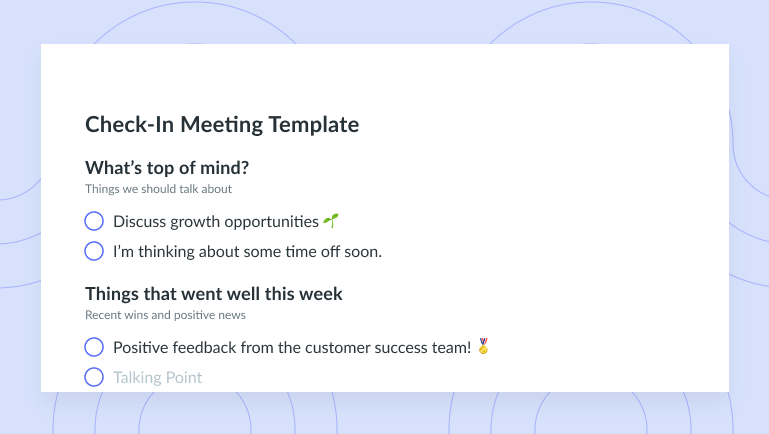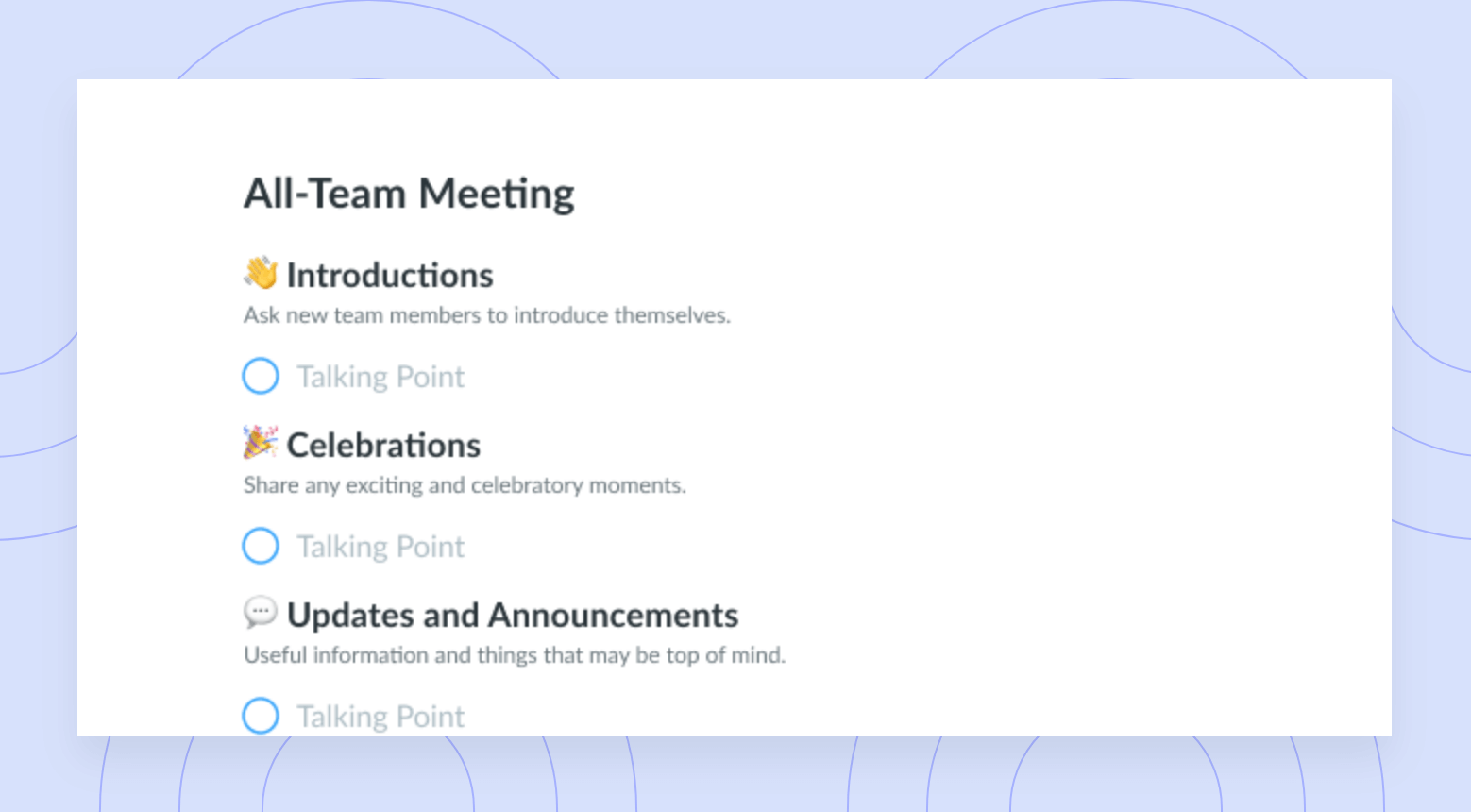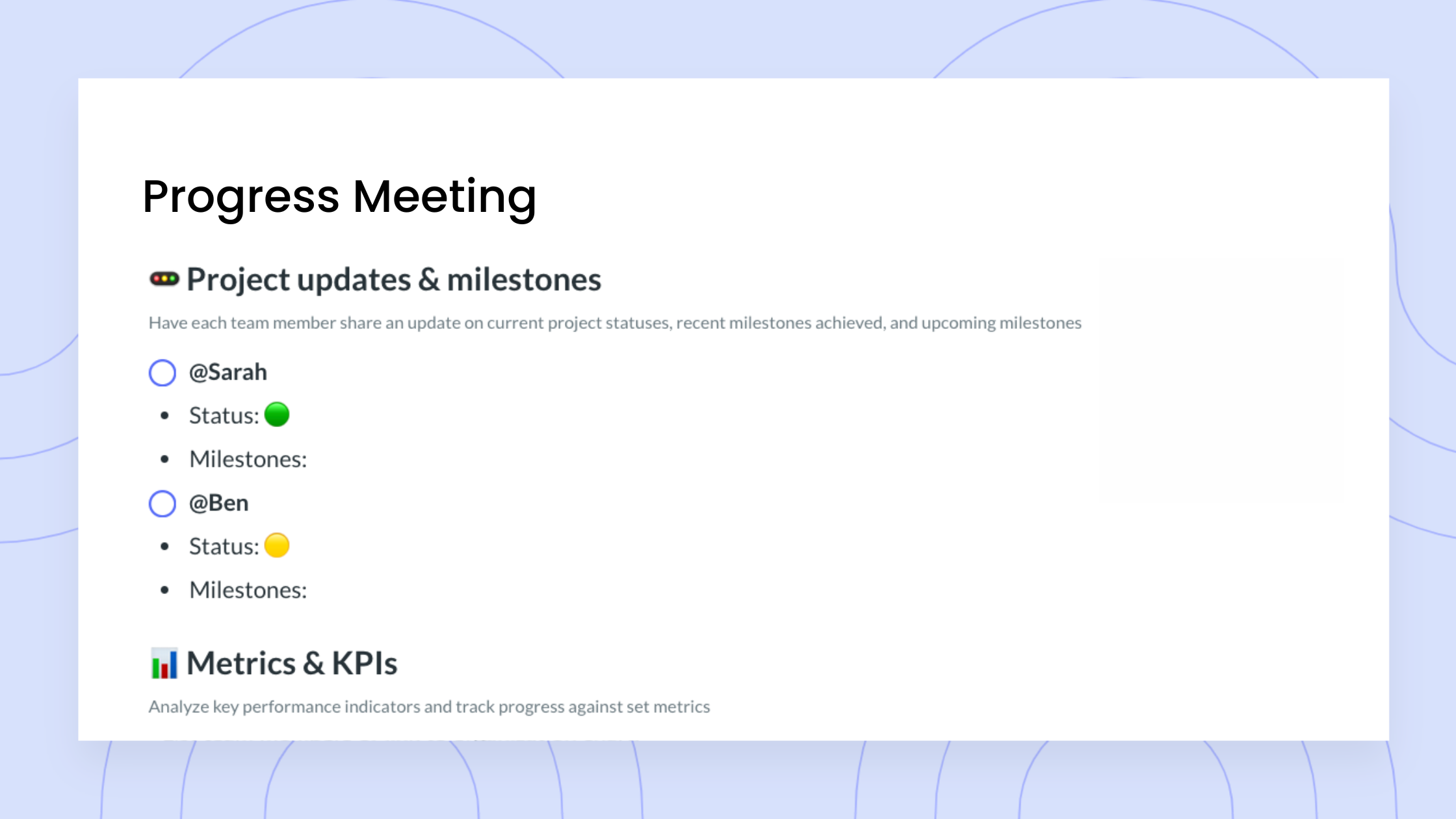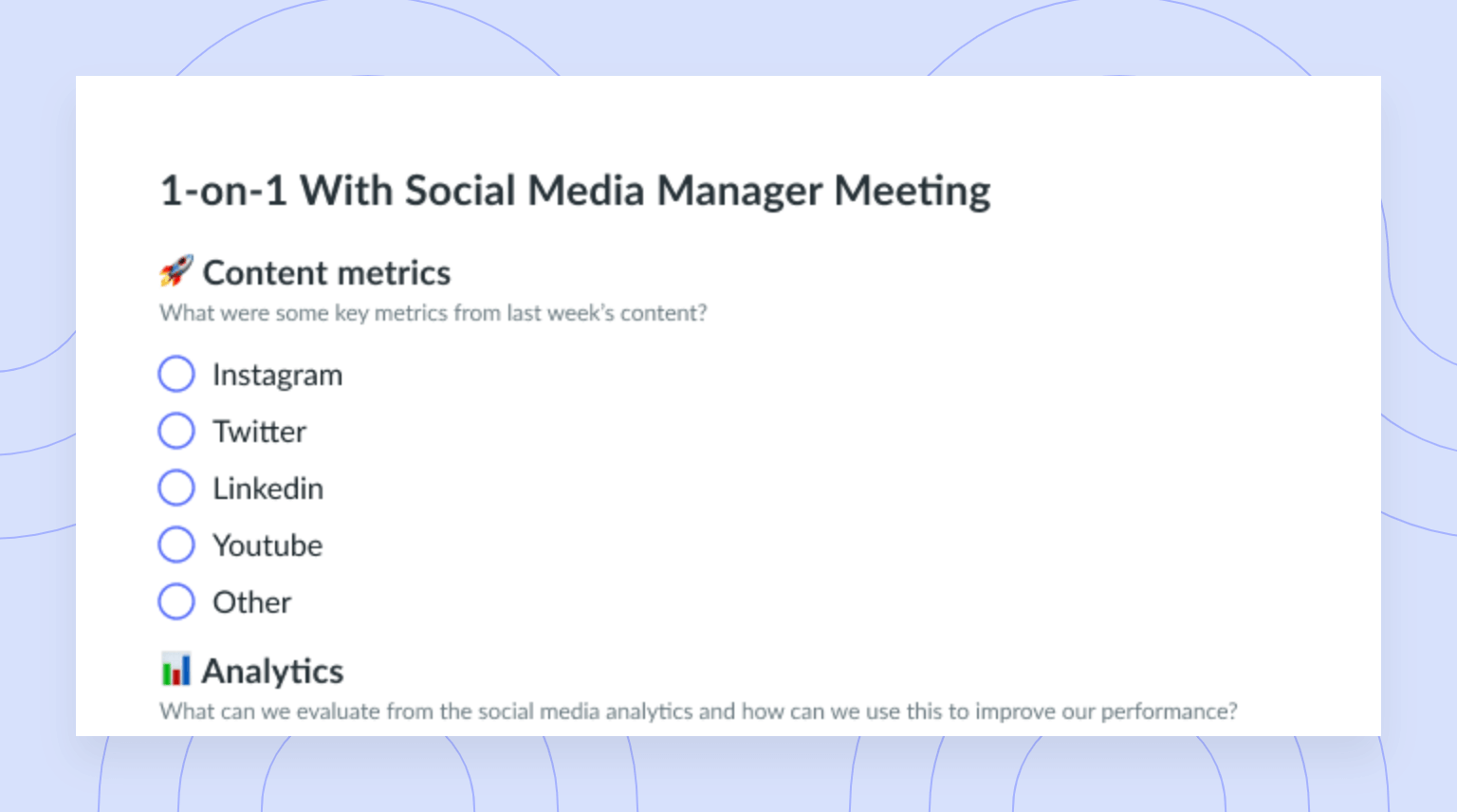How to Be Organized at Work and Stay on Top of Things
Anybody can be organized - including you! Use these tips to stay on top of all your tasks and stay organized.
“You do not rise to the level of your goals,” New York Times bestselling author James Clear once said. “You fall to the level of your systems.” To clarify, he added, “Your goal is your desired outcome. Your system is the collection of daily habits that will get you there.” When Clear speaks of a “collection of daily habits,” he’s talking about everything you do to stay organized.
Clear’s oft-cited quote shows how you reach your goals when you and your team manage your time and stay focused. But as any team leader like yourself knows, committing yourself to this level of organization isn’t always easy. To properly stay on top of things, use the tips in the below primer on how to be organized at work. Before you know it, you’ll be turning out high-quality work and meeting deadlines for all your projects!
Why is it so crucial to be organized at work?
Key tasks don’t slip through the cracks when you’re organized at work. Of course, that’s a major benefit for you, your team, your deadlines, and your projects overall. If you don’t immediately see how that’s true, look at what happens when you don’t stay organized. Tasks go unattended to, productivity plummets, focusing becomes tough amid all your stress, and a healthy work-life balance falls out of reach.
An organized mind is also a more focused, efficient one. Knowing what’s on your plate and how to prioritize it all makes for a calmer and smoother workflow. With proper scheduling and organization, your calendar comes together in a way that maximizes your time and productivity.
This results in openings in your schedule so that you can collaborate more with your teammates and take the time to prepare for future tasks. You can even use the downtime for professional development and growth! Or you can just revel in your sense of accomplishment – congratulate yourself on getting it all done.

Pro tip
Use Fellow to organize your meeting agendas, talking points, action items, and feedback requests all in one place!
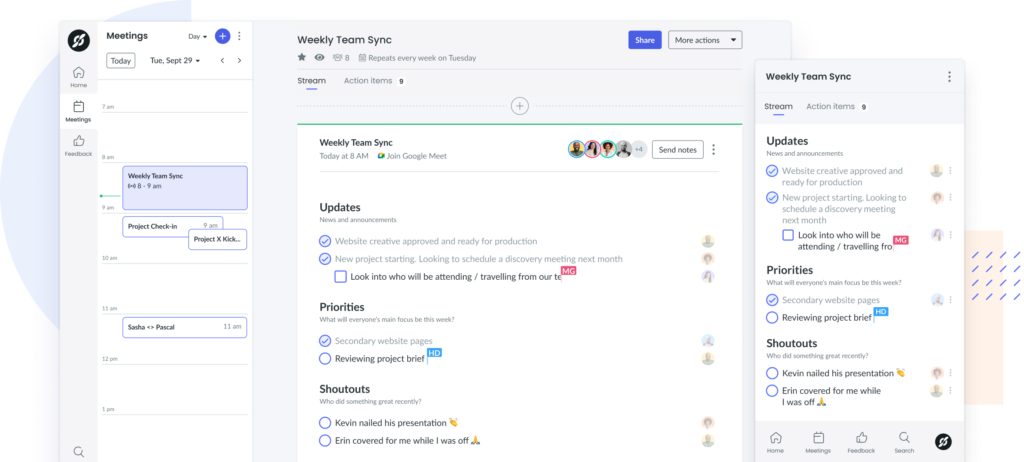
20 tips on how to be organized at work
Ready to get organized at work? We thought so. Here are 20 ways to do it.
- Set priorities
- Use task lists
- Always prioritize time management
- Block your time
- Break out your (digital) calendar
- Delegate when appropriate
- Take breaks
- Avoid multitasking
- Make a weekly plan
- Set time for calls and emails
- Maintain a work-life balance
- Write things down
- Get into a routine
- Use color-coding
- Implement customized task list templates
- Create a filing system
- Cut back on clutter
- Clean your workspace regularly
- Set up some desk organizers
- Stick to your schedule
1 Set priorities
No two tasks are of quite the same importance, and obviously, the more pressing ones should come first. Set deadlines that reflect these priorities. You should prioritize your report due in two weeks over your employee reviews starting next month.
Better yet, break your most complex tasks into smaller tasks with their own deadlines. Draft your report outline four days from now and the report itself 10 days from now. Proofread and revise it 13 days from now. Congrats – you’ve prioritized your tasks and the tiny moving parts of each task!
2 Use task lists
We’ll admit it: The prospect of keeping your tasks floating around in your head can be tempting. Why spend time writing tasks down when you could just work on them? But the mind is fickle – forgetting tasks can be easy if you don’t record them somewhere. Several studies agree that physically writing down your goals can help you achieve them.
Classic notebooks and modern-day project management platforms can help here. The latter is a key type of task management software through which you can assign tasks, provide resources, and communicate with your team. All that under one roof? Talk about organized!
3 Always prioritize time management
One study found that almost all students achieve better grades with improved time management and organizational skills. And sure, you’re no longer a student, but you do still have a ton of responsibilities to balance. The good news is that time management can be easy.
Key time management strategies include time blocking, delegation, taking breaks, avoiding multitasking, and making weekly plans. These strategies are also key tips on how to be organized at work, so we’ll get into each of them below.
4 Block your time
Once you’ve set priorities and filled out your task list, you should plot out when exactly you’ll work on your tasks. To do so, create blocks of time on your calendar for each task. This way, you’ll know what to work on when. You’ll also get a sense of how long your tasks take, so your future time blocking will be more accurate. Plus, you’ll know not to do other things during these times. The result isn’t just organization – it’s productivity.
5 Break out your (digital) calendar
When it comes to time-blocking, few tools are more effective than your digital calendar. Your email should come with this calendar, so it’s not like you’ll have to buy any new tools. Use this calendar to create, store, and order your time blocks.
Just as importantly, block out times when you simply won’t be working so your whole team can see. This way, your team will know when you’re unavailable. When your colleagues know the times when you can’t be reached, they can hold collaborative tasks for times when you’re present. The result is more effective teamwork and, of course, organization.
6 Delegate when appropriate
Nobody’s saying to offload all your work onto your team. That wouldn’t be healthy! It also wouldn’t be respectful or effective. Instead, delegating work starts with identifying tasks that match your teammates’ skill sets.
After you find this overlap, you can ask the pertinent team members if they can add the corresponding task to their list. If they can, you know the task will be done to near-perfection without taking up space on your own list. What a perfect way to stay more organized and less cluttered while making the most of employee work.
7 Take breaks
We’ve all been there: You’ve got a bunch of deadlines looming over you, and if you don’t start working now, you’ll never get done. Well, we’re here to tell you: A) That’s not true. B) If you don’t stop working at some point, your work will start to decline in quality.
Seriously – take breaks. Research has shown that breaks lead to greater productivity and creativity, not to mention improved mental health and habit formation. Combined, all these factors make for better work. They also make for clear minds that won’t lose track of things and can thus easily stay organized.
8 Avoid multitasking
When you have a lot on your plate, it’s tempting to work on two things at once. But you should resist this temptation! A groundbreaking University of Georgia study, most recently revised in August 2020, explains why. According to this study, switching between tasks cuts away at your productivity and focus. When you can’t focus on your tasks, you certainly can’t keep track of them in ways conducive to top-notch organization. So instead of multitasking, block your time and stick to the schedule you’ve set. Your work should pour out of you, and you certainly won’t miss any tasks.
9 Make a weekly plan
During your team meetings and one-on-one meetings, you and your colleagues should identify the week’s most important tasks. You can then distribute these tasks among the days of the week. At the end of each day, you should also figure out which tasks need attention first the next day. This way, you set up a rhythm for your team’s work. With this pacing in place, staying organized is much easier.
10 Set time for calls and emails
For employees at any level, emails pile up fast. For team leaders, endless email is an even bigger problem – and that’s without mentioning all the calls taken. The thing is, emails and calls aren’t exactly key work tasks – they just facilitate the work you’ll do later. So to strike the right balance between the two, block time for answering emails and taking calls.
When you block time for emails, you thwart the potential distraction of replying to emails in the middle of your tasks. Blocking time for calls can also help clients and teammates see when you’re available if you share your calendar. This way, the people you need to speak with will only contact you when you’re not working. With fewer work interruptions, you’ll stay more organized.
11 Maintain a work-life balance
As mentioned earlier, taking breaks is healthy, if not crucial. These breaks will sometimes be just a half-hour, or sometimes they’ll be all night or weekend. That’s right – your regular non-working hours are as important to staying organized as your working hours. When you strike a healthy work-life balance, you’ll likely feel less stressed or burnt out at work. From this healthier mindset, you’ll have an easier time keeping track of your work and getting it all done.
12 Write things down
Whether in a physical notebook, on sticky notes, or in a task management system, always write things down. Among the things you should write down are task lists and ideas pertinent to your tasks. In any case, be sure to group tasks by project and arrange them by deadline. Record things relevant to these tasks near the task’s name or details. This grouping of tasks and information is pretty much the definition of organization. Use Fellow’s stream feature to take personal or shared notes so nothing goes forgotten.
13 Get into a routine
Time-blocking, email and call hours, a healthy work-life balance – they’re all easier to achieve once you get into a routine. If you set your call hours as the same block each week, you’ll know that other times are for productivity. And you might even feel more productive at those times! Plus, when you’re productive during your work blocks and you get all your calls and emails done, your work won’t continue into your personal hours. You’ll live a more organized life.
14 Use color-coding
A color-coded task list, calendar, or set of sticky notes is highly effective for staying organized. That’s because your brain will gradually associate certain colors with the groups with which you’ve paired them. As a result, when you see a task labeled green in your project management system, you’ll know it’s for the client you’ve tagged as green. The same goes for green-tagged resources. And with resources and tasks grouped together, you’ll be perfectly organized.
15 Implement customized task list templates
Let’s say you’ve looked at a bunch of task management platforms and just can’t find one that feels right. That’s understandable, but it’s not a reason to stop considering digital options! If anything, most digital task management platforms have solutions to this problem – namely, customizable task list templates.
You can set these templates to look as close to your ideal task list format as possible. With your tasks presented in a format that you can easily process, you’ll inherently be more organized. Your tasks will appear exactly how you need them, so you’ll never miss another one again.
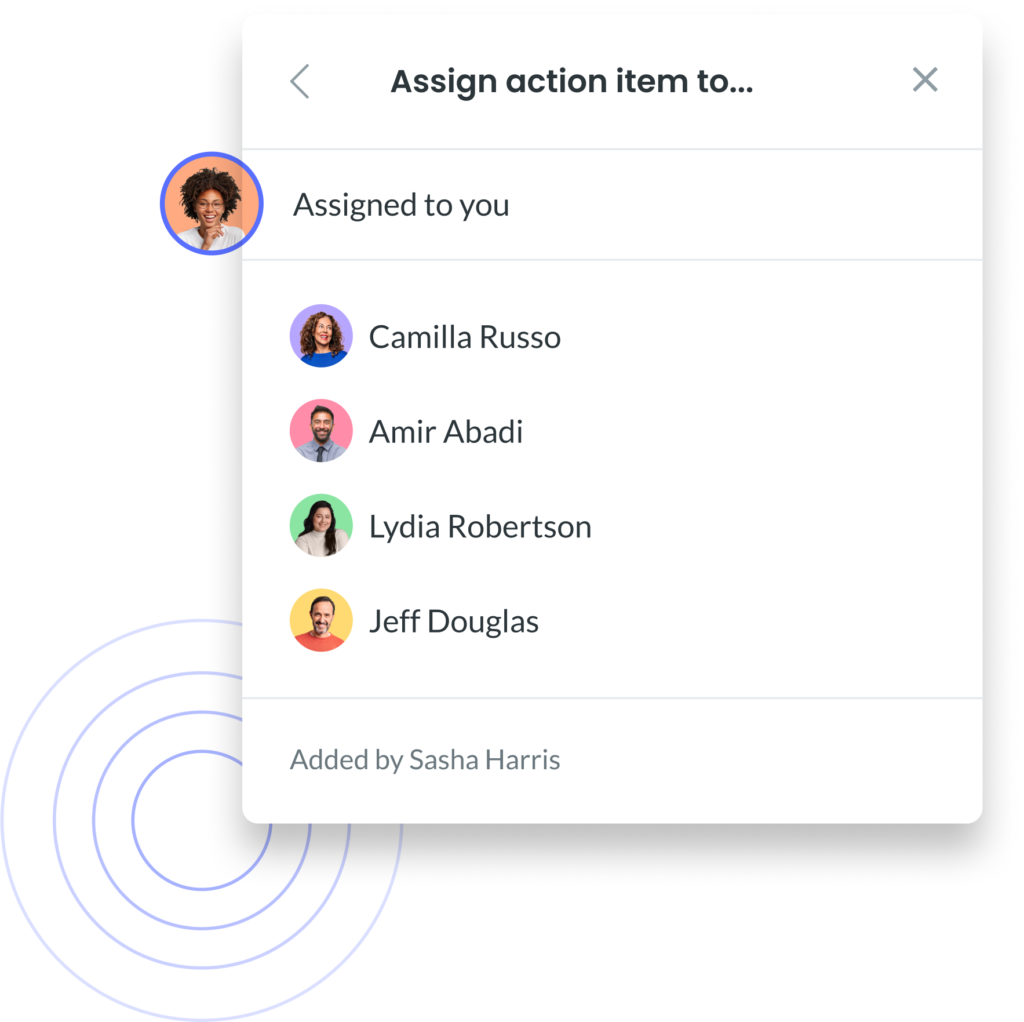
16 Create a filing system
When you create a file system, you take perhaps the most tangible organizing step possible. Your filing system could be as rudimentary as a filing cabinet with appropriately labeled folders. Alternatively, you could forgo physical spaces for digital platforms through which you can create a greater number of folders and files.
Digital file storage also comes with the unique advantage of subfolders and customizable folder and file names. Whereas your filing cabinet might include an “instructions manual” folder, your digital folder could include subfolders for each brand. Your digital folder of word documents prepared for clients could also have titles that organize files chronologically, by client, or something else. The choice of how to organize everything is entirely yours.
17 Cut back on clutter
If you opt for a physical filing cabinet, clutter can quickly accumulate. After all, physical folders can only hold so many papers. To avoid this clutter, regularly clear your files of paperwork you no longer need. Pay attention to your desk too, where clutter is even more common. Tangled wires, scattered papers, and loose pens all make a desk both look and feel disorganized. Plus, it’s hard to be productive when you barely have desk space or can’t find the tools you need.
18 Clean your workspace regularly
Staying organized is a principle, but it’s also a feeling. Even if you’ve implemented a brilliant digital filing system and cleared your desk of clutter, a disheveled or unclean office space might still feel disorganized. This problem has an easy solution: Clean your workspace often. You’ll likely wind up getting rid of things you don’t need and making your space look pristine in ways that greatly benefit your work.
19 Set up some desk organizers
Let’s face it – cleaning your office isn’t exactly work. That said, it’s also a must for proper organization. And with desk organizers, you can increase the amount of time you can wait between clean-ups.
Think about it: If your desk has less clutter on it, won’t your space feel cleaner overall? That’s the magic of desk organizers. They keep your items within reach but not splattered all over your desk. There’s a reason they have “organizers” in their name – they can play a key role in how to be organized at work.
20 Stick to your schedule
A great way to accidentally get disorganized is to start working outside your schedule. You might just feel somehow off working odd hours, and that’s a surefire way to forget certain things or just not be in the zone. This all introduces the potential for lower-quality work that can create moments of disorganization later. To avoid this mishap, stick to your schedule. Your workflow – and your work-life balance – will thank you.
Any organization can be organized
Did you notice the glaring thing all the above organization tips have in common? They’re all super easy to implement. Yes, any person – including you! – can be organized with the above tips. And so too can teams if everyone brings their individual productivity practices to organization-wide meetings. For those occasions, Fellow’s tools for meeting agendas, action items, idea streams, and feedback keep everyone organized, on track, and thriving.




